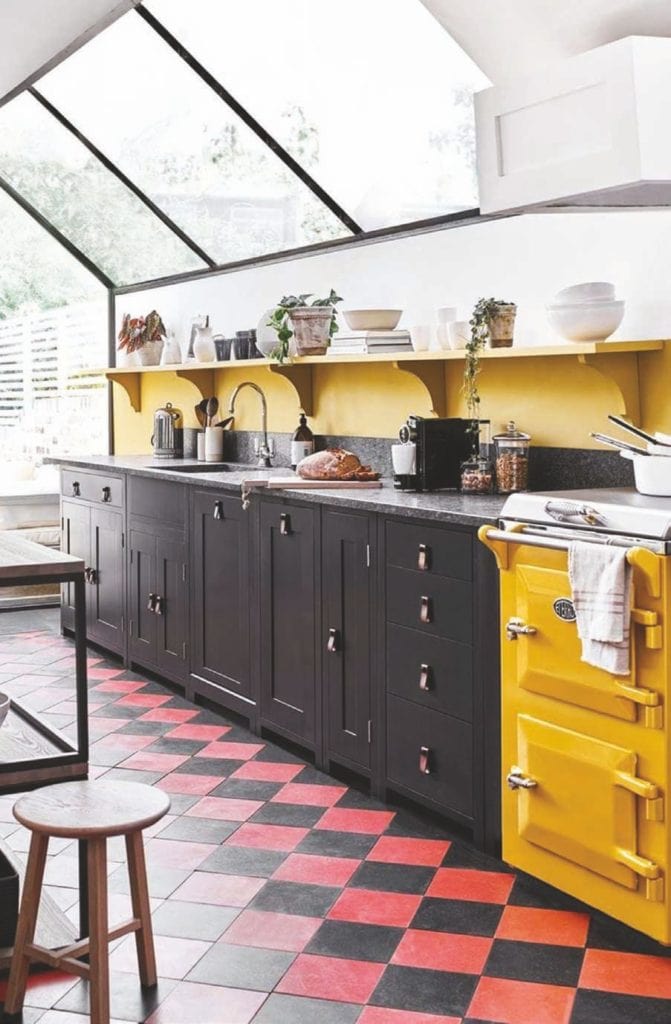Kitchens Through Time
For a kitchen to feel truly comfortable in a home, it needs to work with the architecture of the space, respecting the features for a harmonious result.
Georgian
If you’re lucky enough to live in a Georgian home, we’d recommend trying to capture the elegance this period is known for by focusing on symmetry and grand proportions.
A sense of light and space is also important in your modern interpretation of the Georgian kitchen – they loved balance and harmony and paid particular attention to the hidden details and craftsmanship in hinges and dovetail joints. Kitchen cabinets and walls were often hand painted in pale shades with a matt finish. An ornate cooker hood, will echo the grand detailing of the period, while neat, oval, burnished brass cabinet handles, reflect the focus on simple elegance.
It’s also worth noting that a traditional Georgian kitchen would’ve been in the basement, the domain of servants, but that, since then, many have been reconfigured to sit on the ground floor, more conveniently close to the living spaces (something you might want to consider if yours is still in the basement).
Victorian
Much as today, the range cooker was the focus of the Victorian kitchen, with the rest of the space usually divided into sections – a food prep area, the scullery where the sink was housed, and a cool larder. For a modern interpretation, you could consider a large larder with its cavernous storage space and cool marble shelf, and a ceramic double-bowl butler’s sink. Another Victorian trait that’s passed on to today’s kitchen is the central wooden table. This was where food prep took place, and the family (or servants in larger properties) ate. Usually made of pine, it was scrubbed clean with sand, soda and water giving it the distinct matt finish we still appreciate today. And of course, the dresser was also a key element of the Victorian kitchen. With this period’s classic high ceilings, they could reach up to seven foot. You could create a similar effect with a combination of cabinets, reaching as high as your ceilings allow. And for those final touches, consider cast iron radiators as a feature and lots of copper pans on display.
Edwardian
Edwardian architecture tends to be airy and roomier than its Victorian predecessors – spaces are slightly wider with similarly high ceilings, coupled with intricate patterns on floors and architrave. Unlike the darker shades favoured by the Victorians, Edwardian kitchens tend to be fresh and white (there was a new focus on hygiene during this period) so go for pale and airy colours on cabinets and walls. Glass-fronted cabinets became popular during this period.
1930s to 1950s
Parquet flooring was a style statement during this period, though many working-class houses still had simple pine floorboards and rugs. If you’re looking to complement your property’s features with flooring, oak flooring would be a good solution in a 1930s property, or for a more modern flourish, you could try a parquet design. Kitchens in this period were the domain of the housewife and were compact and functional rather than social. Today, a sympathetic solution would be to knock through a kitchen and dining room but keep the areas defined by flooring or decor. Some design rules need to be broken!
1950s to 1970s
Mid-20th-century architecture is all about
open, light-filled and airy spaces. Windows tend
to be large and wide, and open plan living was
key when these homes were designed. Details
are minimal and unfussy – from the windows
to the lack of radiators (thanks to underfloor
heating). Clean lined cabinetry work well in
modern spaces when the focus is on precise
lateral lines, that echo the simple architectural
style. And true to the social nature of a modern
property, we’re big fans of a bench seating
system, which is not only space efficient but
gives the sense of a streamlined, pared back
American diner.
1970s ONWARDS
Broadly speaking, new (or newer) build houses
tend to be a bit more of a blank canvas than any
other. Unless you’ve been lucky enough to build
your home yourself, in which case you can
add whatever character to the architecture that
suits you, the trend has been to create homes
that are much more minimal and open to their
owner’s interpretation. Far from being dull, we
think this style of building means you have the
exciting opportunity to bring your own sense
of style to the interior décor without feeling
restricted by the architecture’s style. While the
aesthetic is almost entirely open to anything
though, you’ll still want to design for the
proportions of the room. In particular, many
new builds have lower ceilings, so you may
find that a mix of open shelving, countertop
cabinets and full-height cabinets feels less heavy
than all round wall cabinets.

Cottages
Cottage architecture is more of an evolution than a set period of time but most share irregular characteristics such as low ceilings, exposed beams, uneven floors and awkward nooks. Historically, cottage kitchens comprised of freestanding – and often un-matching – furniture, so a pine wood table would happily sit in front of an oak dresser on a sandstone or slate floor. As cottage kitchens can be small, it’s best to keep the colour scheme pale, and you can’t go wrong with timeless greens (try Sage or French Grey in a kitchen that opens onto a country garden). In fact, cottages are distinctly linked to the countryside, so where better to draw inspiration for the kitchen’s décor than nature’s palette. We’d recommend choosing fabrics that capture the beauty of the countryside, such as garden roses, and mix these patterns with neutral plains. A dresser with open shelving and a scrubbed wooden table complete the cottage aesthetic, perfect in its imperfections.
Words and photos courtesy of Neptune.com.
Posted in: General





